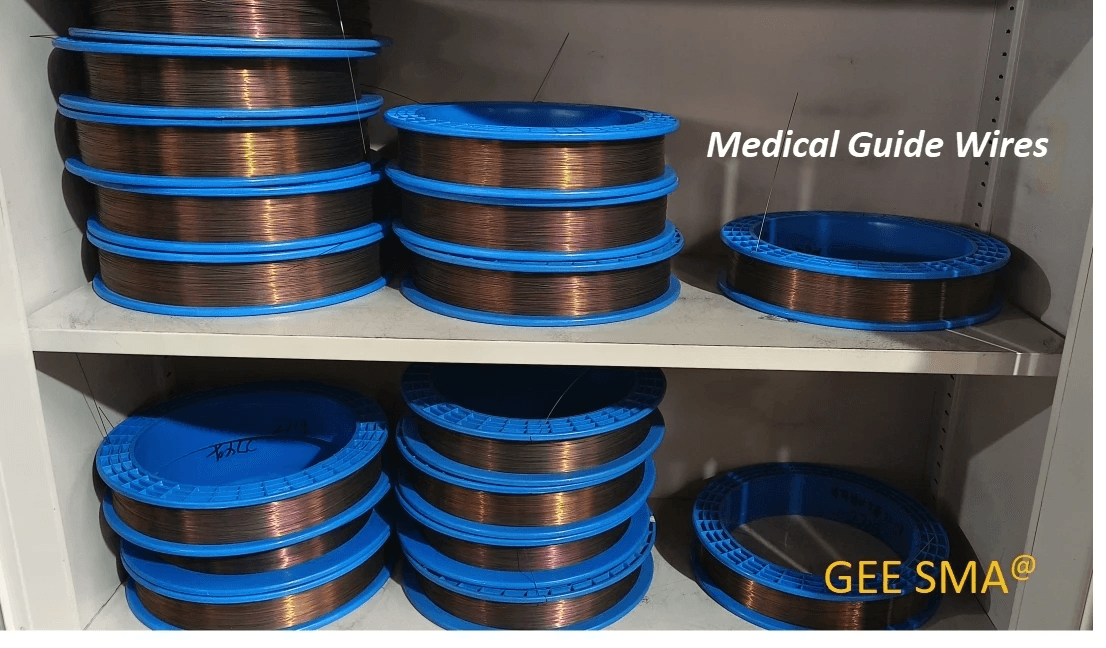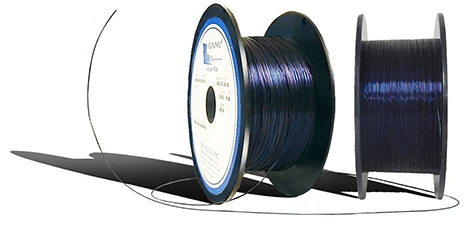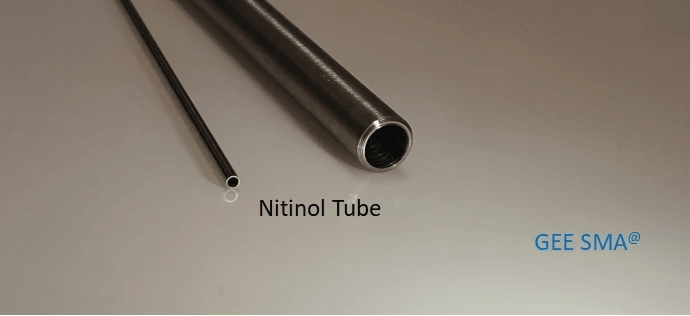Introduction

Understanding the relationship between tooth alignment and pain is essential for both patients and orthodontists alike. While many factors contribute to the level of pain experienced during treatment, the choice of material used in braces can significantly influence this experience.
Understanding Tooth Alignment and Pain
Tooth alignment is not just about aesthetics; it impacts oral health, function, and overall well-being. However, as teeth are gradually moved into their desired positions using various materials like copper NiTi wires in orthodontics, patients may experience varying levels of discomfort or pain. This discomfort can stem from pressure exerted on teeth and surrounding tissues during the adjustment process.
The Role of Material in Orthodontics
The choice of material in orthodontic treatments significantly affects not only efficacy but also patient comfort throughout the process. Copper NiTi wires have emerged as a popular alternative to traditional nickel materials, offering unique advantages that can enhance treatment outcomes while potentially reducing pain levels. By understanding how different materials work within orthodontic frameworks, practitioners can tailor treatments to better suit individual patient needs.
Comparing A-NiTi and Cu-NiTi
In recent years, there has been a growing interest in comparing A-NiTi (austenitic nickel titanium) and Cu-NiTi (copper nickel titanium) for their respective roles in orthodontic treatments. While both types utilize nickel materials for flexibility and strength, copper NiTi wires bring additional properties that may improve performance during tooth wire treatment. By examining these differences more closely, we can gain insights into how each material impacts pain perception and overall efficacy.
Overview of A-NiTi and Cu-NiTi

In orthodontics, understanding the materials used in teeth wire treatment is crucial for both effectiveness and patient comfort. Two prominent types of wires are A-NiTi (austenitic nickel-titanium) and Cu-NiTi (copper nickel-titanium). Each has unique properties that influence their performance in aligning teeth and managing discomfort.
What is A-NiTi?
A-NiTi, or austenitic nickel-titanium, is a widely used material in orthodontic applications due to its superelasticity and shape memory properties. This means that when the wire is deformed, it can return to its original shape when heated, providing consistent force on the teeth throughout treatment. The nickel material in A-NiTi contributes to its flexibility and resilience, making it a popular choice for initial alignment stages.
What is Cu-NiTi?
Cu-NiTi stands for copper nickel-titanium and represents an innovative evolution of traditional NiTi wires. By adding copper to the mix, this wire exhibits modified thermal properties that allow for more controlled force application during tooth movement. This unique composition helps enhance patient comfort while maintaining effective alignment throughout the course of treatment with copper NiTi wires in orthodontics.
Key Differences in Properties
The primary difference between A-NiTi and Cu-NiTi lies in their mechanical behavior during use. While A-NiTi wires provide consistent force levels over time, Cu-NiTi wires offer a more variable response based on temperature changes within the mouth. Additionally, copper NiTi wires tend to generate less friction against brackets compared to their nickel counterparts, which can lead to shorter treatment durations and improved overall efficacy in teeth wire treatment.
The Science Behind Copper NiTi Wires

When it comes to orthodontics, the materials used can make all the difference in treatment effectiveness and patient comfort. One standout player in this field is copper NiTi wire, known for its unique properties that set it apart from traditional nickel titanium (NiTi) wires. Understanding the science behind copper NiTi wires helps both practitioners and patients appreciate their role in teeth wire treatment.
Composition and Functionality
Copper NiTi wires are composed of a carefully balanced alloy of nickel and copper, which enhances their mechanical properties compared to standard nickel material alone. This specific composition allows for a unique transformation temperature, meaning these wires can adapt more effectively to body heat during treatment. Consequently, this results in a more consistent force applied to the teeth, potentially leading to quicker and more efficient alignment.
The addition of copper not only influences flexibility but also improves the wire's ability to return to its original shape after being deformed—a critical feature in orthodontics. This functionality is essential when considering how well these wires perform under various conditions throughout treatment. In essence, copper NiTi wires offer an innovative approach that combines strength with adaptability.
How Copper NiTi Wire Affects Treatment
The use of copper NiTi wire significantly impacts how orthodontic treatments progress by providing a gentler force on teeth during alignment processes. Unlike standard nickel titanium options, which may exert excessive pressure at times, these wires maintain a more controlled application of force—leading to less discomfort for patients undergoing teeth wire treatment. This means that individuals can experience effective tooth movement without as much associated pain.
Moreover, studies have shown that treatments utilizing copper NiTi wires often result in shorter overall duration due to their superior performance characteristics. Patients may find themselves spending less time in braces while still achieving optimal results—a win-win situation! As such, choosing copper NiTi wires can be seen as a forward-thinking decision that benefits both orthodontists and patients alike.
Advantages of Copper NiTi in Orthodontics
The advantages of using copper NiTi wires extend beyond just comfort; they also include improved efficacy and patient satisfaction metrics throughout the treatment process. One significant benefit lies in their ability to maintain consistency over time without losing shape or effectiveness—traits essential for successful outcomes in orthodontics. This reliability means practitioners can trust that these materials will deliver results as expected.
Additionally, many patients report higher levels of satisfaction when treated with copper NiTi wires compared to traditional options due to reduced pain levels during adjustments and overall procedures involving teeth wire treatment. With fewer visits required thanks to accelerated tooth movement capabilities, both time and financial resources are conserved—another plus for those seeking effective orthodontic solutions! Ultimately, embracing innovations like copper NiTi wires represents an exciting step forward within the realm of orthodontic materials.
Pain Perception in Tooth Wire Treatment

Navigating the world of orthodontics often means confronting the specter of pain associated with tooth wire treatment. For many patients, the thought of metal wires tightening against their teeth can evoke anxiety and discomfort. Understanding pain in orthodontics is crucial for both practitioners and patients to create a more comfortable experience.
Understanding Pain in Orthodontics
Pain in orthodontics typically arises from the pressure exerted by braces and wires on teeth and gums. This pressure is necessary to gradually shift teeth into their desired positions, but it can lead to soreness, especially after adjustments. The sensation varies widely among individuals, influenced by factors such as sensitivity levels, treatment type, and even the materials used—like copper NiTi wires versus traditional nickel materials.
Factors Affecting Pain Levels
Several factors play a role in determining how much pain a patient may experience during treatment with copper NiTi wires or other orthodontic materials. Individual pain tolerance is a significant player; some people are simply more sensitive than others when it comes to dental procedures. Additionally, the type of wire used impacts discomfort levels; for instance, copper NiTi wires tend to provide a gentler force compared to their nickel counterparts, potentially reducing overall pain perception during tooth wire treatment.
Pain Comparison: A-NiTi Vs. Cu-NiTi
When comparing A-NiTi (austenitic nickel titanium) and Cu-NiTi (copper nickel titanium) wires in terms of pain perception, research indicates that patients often report lower discomfort levels with copper NiTi wires. The unique properties of copper NiTi allow for more controlled force application throughout treatment phases, which can lead to less soreness post-adjustment compared to traditional nickel materials like A-NiTi. Therefore, choosing copper NiTi wires in orthodontics not only aids effective alignment but also enhances patient comfort—a win-win scenario!
Efficacy of Copper NiTi Wires

Copper NiTi wires have emerged as a game-changer in orthodontics, revolutionizing the way teeth wire treatment is approached. Their unique composition and properties not only enhance treatment outcomes but also optimize patient comfort during the process. Understanding the efficacy of these wires is essential for both orthodontists and patients seeking effective solutions for tooth alignment.
Treatment Duration and Results
When it comes to treatment duration, copper NiTi wires in orthodontics often outperform their traditional counterparts. The incorporation of copper into the nickel material allows for a more efficient force delivery, which can lead to shorter treatment times while still achieving desired results. Patients frequently report that their teeth wire treatment progresses more rapidly with copper NiTi wires, making them a popular choice among orthodontic professionals.
Moreover, studies indicate that patients using copper NiTi wires experience more consistent tooth movement compared to those using standard nickel titanium options. This consistency not only helps in achieving optimal alignment but also reduces the number of adjustments needed throughout treatment. Ultimately, this means fewer visits to the orthodontist and a smoother journey toward that perfect smile.
Patient Satisfaction Metrics
Patient satisfaction metrics are crucial when evaluating any dental treatment method, including those involving copper NiTi wires in orthodontics. Surveys indicate that individuals treated with these innovative wires often report higher levels of satisfaction due to reduced discomfort and shorter overall treatment times. This increase in comfort can be attributed to the unique thermal properties of copper NiTi wires, which allow for gentler forces on teeth.
Additionally, many patients appreciate the aesthetic benefits associated with faster results; they find themselves smiling confidently sooner than expected. The combination of effective tooth movement and improved comfort has led many practitioners to favor copper NiTi over traditional options in their practices. As patient satisfaction continues to rise with this material's use, it becomes clear why so many are turning to copper NiTi wire orthodontics for their dental needs.
Case Studies on Copper NiTi Effectiveness
Numerous case studies highlight the effectiveness of copper NiTi wires compared to conventional materials used in teeth wire treatments. One notable study followed a group of patients undergoing similar treatments; those using copper NiTi exhibited significant improvements in alignment within just a few months compared to their peers using standard nickel titanium options. These findings underscore how utilizing advanced materials like copper NiTi can lead not only to better clinical outcomes but also enhanced patient experiences.
Furthermore, specific cases have illustrated how these innovative wires can address complex malocclusions effectively while minimizing discomfort during adjustments—a win-win situation for both practitioners and patients alike! As research continues into this area, it's evident that incorporating copper into orthodontic materials could redefine best practices across the field. With each successful case study reinforcing its effectiveness, it’s no wonder that many are eager to embrace this cutting-edge technology.
Innovations in Orthodontic Materials

The field of orthodontics is constantly evolving, and innovations in materials play a crucial role in enhancing treatment outcomes. Among these advancements, the development of new alloys and wire compositions has revolutionized how we approach teeth wire treatment. As the demand for efficient and comfortable orthodontic solutions grows, so does the exploration of materials like GEE SMA and advanced nickel materials.
GEE SMA and Nitinol Developments
GEE SMA (Shape Memory Alloy) is at the forefront of orthodontic material innovation, offering unique properties that improve tooth alignment efficiency. This alloy boasts a remarkable ability to return to its original shape when heated, making it an excellent choice for creating wires that adapt to patient needs over time. In comparison to traditional copper NiTi wires in orthodontics, GEE SMA provides enhanced performance with reduced discomfort during treatment.
Nitinol, another significant material in orthodontics, combines nickel and titanium to create wires that are both flexible and resilient. The unique properties of nitinol allow it to exert consistent forces on teeth while minimizing pain during adjustments—a key factor for patient satisfaction. With ongoing research into optimizing nitinol formulations, we can expect even greater advancements in how these wires function within the realm of teeth wire treatment.
Future Trends in Orthodontic Wire Materials
As technology advances, future trends in orthodontic wire materials are leaning towards customization and enhanced performance characteristics. Researchers are exploring hybrid materials that combine the best features of copper NiTi wires with other elements to create superior alternatives tailored to individual patient needs. These developments aim not only at improving effectiveness but also at reducing discomfort associated with traditional braces.
Another trend is the integration of smart technology into orthodontic materials—think sensors embedded within wires that can monitor tooth movement in real-time! Such innovations could provide invaluable data for orthodontists, allowing them to adjust treatments more precisely based on individual progress. The focus on biocompatibility will also continue as practitioners seek materials that minimize allergic reactions or sensitivities related to nickel material used in conventional braces.
Custom Solutions for Patient Needs
Customization is becoming a hallmark of modern orthodontics as practitioners recognize that each patient's dental structure is unique. With advances in 3D printing technology, creating personalized copper NiTi wires tailored specifically for an individual's mouth is more feasible than ever before. These custom solutions not only improve comfort but also enhance treatment efficacy by ensuring optimal force application throughout the teeth wire treatment process.
Moreover, patients today are increasingly seeking aesthetic options alongside functionality—clear aligners or tooth-colored brackets combined with innovative wire solutions can meet this demand effectively. By leveraging new technologies alongside traditional methods like copper NiTi wires in orthodontics, practitioners can provide comprehensive care that addresses both health and cosmetic concerns seamlessly. Ultimately, these custom approaches pave the way for a future where every patient receives personalized care designed just for them.
Conclusion
In the ever-evolving world of orthodontics, the choice of materials plays a pivotal role in treatment outcomes and patient comfort. When considering options like A-NiTi and Cu-NiTi, it’s essential to weigh the benefits of copper NiTi wires against traditional nickel materials. Ultimately, selecting the right material for teeth wire treatment can significantly influence both efficacy and pain levels experienced during the process.
Choosing the Right Material for Treatment
Choosing between different orthodontic materials is not merely a matter of preference; it can drastically alter treatment experiences. Copper NiTi wires in orthodontics have emerged as a strong contender due to their unique properties that enhance flexibility and reduce discomfort compared to standard nickel materials. Patients should consult with their orthodontists to determine which type of wire will best suit their individual needs, ensuring optimal results throughout their teeth wire treatment journey.
Pain Management Strategies in Orthodontics
Pain perception during orthodontic treatments can vary widely among patients, influenced by factors such as wire type and individual sensitivity levels. Effective pain management strategies are crucial for enhancing patient comfort during teeth wire treatment; these may include over-the-counter pain relievers or specific adjustments made by the orthodontist using copper NiTi wires. By understanding how different materials impact pain levels—especially when comparing A-NiTi versus copper NiTi—orthodontists can tailor approaches that prioritize patient well-being while achieving desired results.
The Future of Orthodontic Technologies
The future of orthodontic technologies looks promising with ongoing innovations in materials like copper NiTi wires and beyond. As research continues into alternatives such as GEE SMA (Shape Memory Alloys), we may see even more customized solutions tailored to individual patient needs emerge on the market. With advancements in technology, including 3D printing for creating personalized braces, we are likely entering an era where discomfort is minimized, and satisfaction maximized—making teeth wire treatment a more pleasant experience than ever before.

